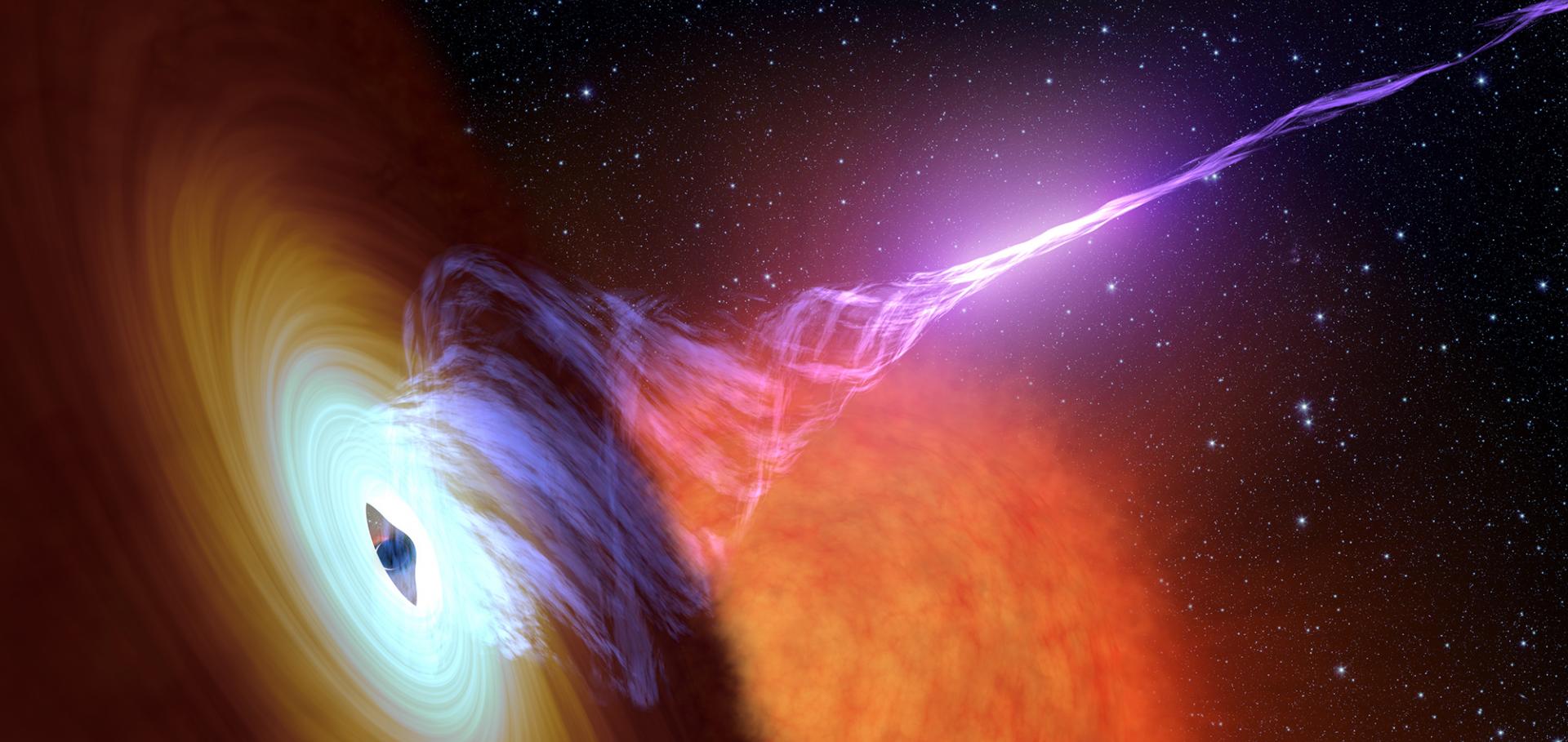Jets from a stellar-mass black hole are as relativistic as those from supermassive black holes
(2025)
Blast waves and reverse shocks: from ultra-relativistic GRBs to moderately relativistic X-ray binaries
Monthly Notices of the Royal Astronomical Society Oxford University Press 539:3 (2025) 2665-2684
Abstract:
Blast wave models are commonly used to model relativistic outflows from ultra-relativistic gamma-ray bursts (GRBs), but are also applied to lower Lorentz factor ejections from X-ray binaries (XRBs). Here, we revisit the physics of blast waves and reverse shocks in these systems and explore the similarities and differences between the ultra-relativistic () and moderately relativistic () regimes. We first demonstrate that the evolution of the blast wave radius as a function of the observer frame time is recovered in the on-axis ultra-relativistic limit from a general energy and radius blast wave evolution, emphasizing that XRB ejections are off-axis, moderately relativistic cousins of GRB afterglows. We show that, for fixed blast wave or ejecta energy, reverse shocks cross the ejecta much later (earlier) on in the evolution for less (more) relativistic systems, and find that reverse shocks are much longer lived in XRBs and off-axis GRBs compared to on-axis GRBs. Reverse shock crossing should thus typically finish after 10–100 of days (in the observer frame) in XRB ejections. This characteristic, together with their moderate Lorentz factors and resolvable core separations, makes XRB ejections unique laboratories for shock and particle acceleration physics. We discuss the impact of geometry and lateral spreading on our results, explore how to distinguish between different shock components, and comment on the implications for GRB and XRB environments. Additionally, we argue that identification of reverse shock signatures in XRBs could provide an independent constraint on the ejecta Lorentz factor.Sub-second optical/near-infrared quasi-periodic oscillations from the black hole X-ray transient Swift J1727.8–1613
Monthly Notices of the Royal Astronomical Society Oxford University Press 539:3 (2025) 2347-2361
Abstract:
We report on the detection of optical/near-infrared (O-IR) quasi-periodic oscillations (QPOs) from the black hole (BH) X-ray transient Swift J1727.8–1613. We obtained three X-ray and O-IR high-time-resolution observations of the source during its intermediate state (2023 September 9, 15, and 17) using NICER, HAWK-I@VLT, HIPERCAM@GTC, and ULTRACAM@NTT. We clearly detected a QPO in the X-ray and O-IR bands during all three epochs. The QPO evolved, drifting from 1.4 Hz in the first epoch, up to 2.2 Hz in the second, and finally reaching 4.2 Hz in the third epoch. These are among the highest O-IR QPO frequencies detected for a BH X-ray transient. During the first two epochs, the X-ray and O-IR emission are correlated, with an optical lag (compared to the X-rays) varying from +70 to 0 ms. Finally, during the third epoch, we measured, for the first time, a lag of the band with respect to the band at the QPO frequency ( +10 ms). By estimating the variable O-IR SED we find that the emission is most likely non-thermal. Current state-of-the-art models can explain some of these properties, but neither the jet nor the hot flow model can easily explain the observed evolution of the QPOs. While this allowed us to put tight constraints on these components, more frequent coverage of the state transition with fast multiwavelength observations is still needed to fully understand the evolution of the disc/jet properties in BH low-mass X-ray binaries.A persistent disk wind and variable jet outflow in the neutron-star low-mass X-ray binary GX 13+1
(2025)
A MeerKAT survey of nearby dwarf novae: I. New detections
Monthly Notices of the Royal Astronomical Society Oxford University Press 539:3 (2025) 1894-1907


